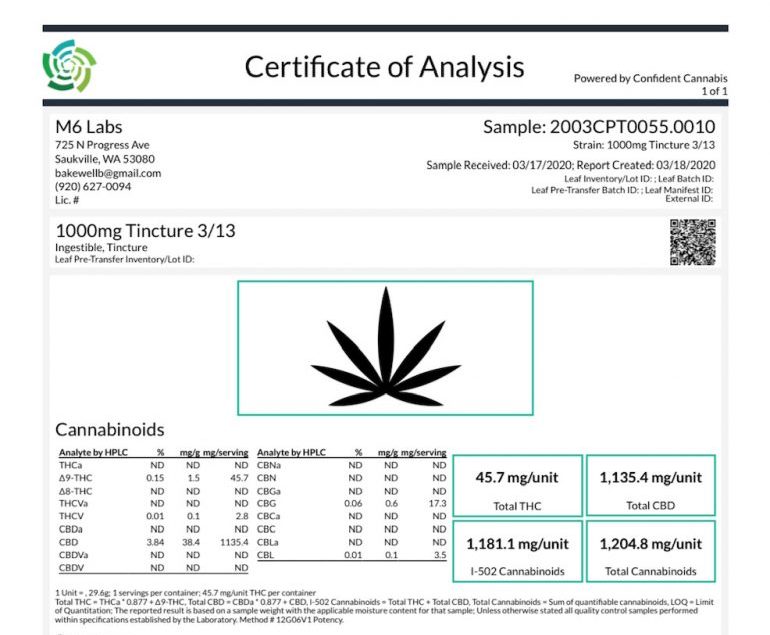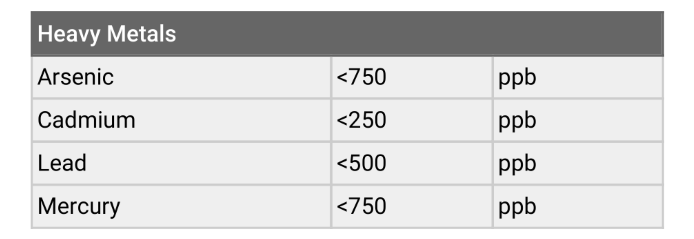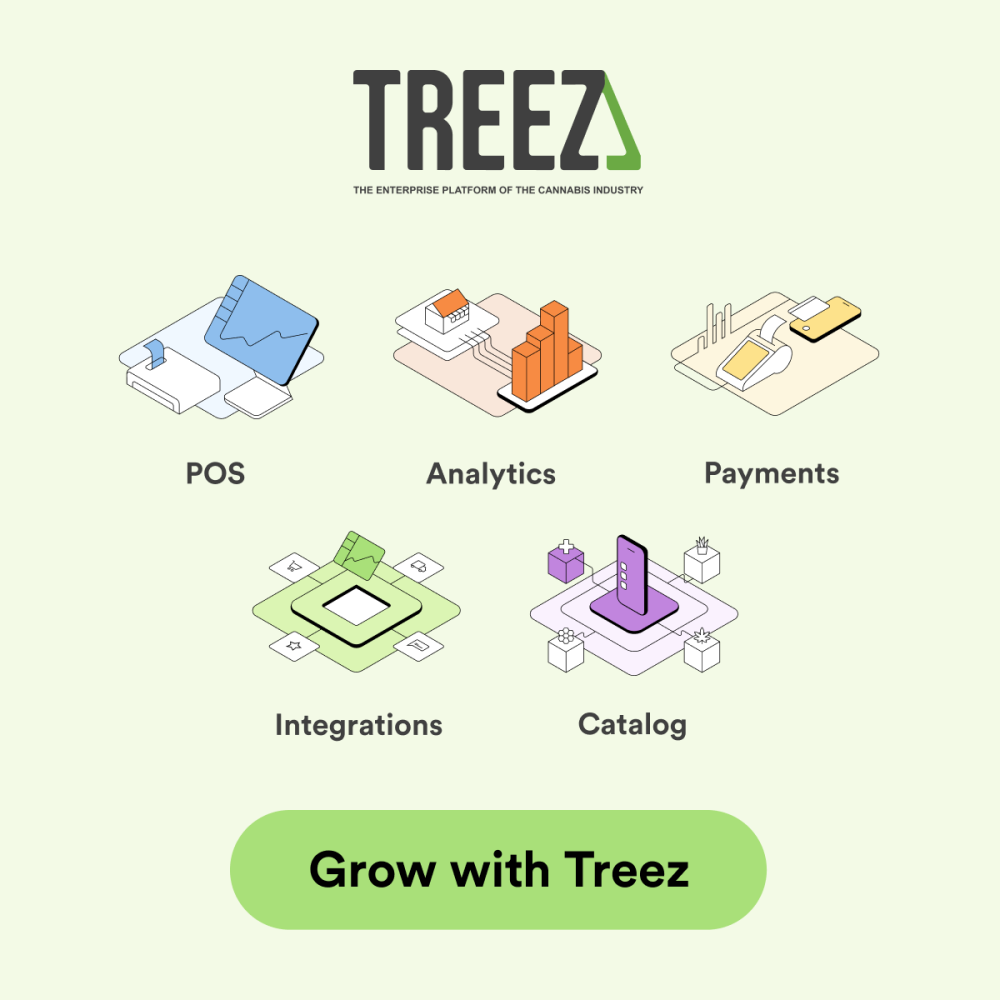America’s hemp industry has blown up in a very short time span. In order to maintain tolerable product quality, the U.S Hemp Authority was created. This legally independent organization offers the “Hemp Certification” program that grants CBD Certificates of Analysis to applicants.
Companies like Charlotte’s Web, one of the biggest CBD retailers in America, stress the importance of customers being educated on what good cannabidiol products look like. You can’t exactly watch companies process your CBD before you buy it, so this leads to the need for an analysis program.
How to Read a CBD Certificate of Analysis
CoA’s focus on four main topics: cannabinoids, microbial contamination, residual heavy metals/solvents, and pesticides. We’ve supplied our own CBD products’ CoA as well as some others for examples while we walk through what to look for.

1. Cannabidiol
Here you can see an excerpt from RMR’s 1000mg Tincture CoA. According to the 2018 Farm Bill, hemp is legal so long as it contains no more than 0.3% D9-THC. Our tincture contains 45.7 mg/unit, leveling out at 0.15%.
It is important to note that “ND” in place of a value simply means “not detected.” NA on the other hand is “not applicable.” The cannabinoid table is the first step in ensuring that your CBD is not psychoactive and meets standards.

Excerpt via cannigma.com
Some CoA’s also analyze terpene quantities. Here’s an example from a certificate for Aurora’s Blue Dream cannabis. Terpenes distinctly define the flavor/aroma of the product, so be on the lookout for a terpene list to get an idea of what you’ll be tasting.
All of Respect My Region’s CBD products have received Certificates of Analysis and are manufactured by M6 Labs in Wisconsin. Orders are made in-house in small batches and tested by qualified third-party laboratories. Click the link below to check out our full-spectrum oils, pre-rolled joints and more.
CBD Tinctures, Pre-Rolls and Gummies by Respect My Region
2. Microbial contamination
On one hand of this spectrum there’s the use of harmful pesticides, and on the other is negligence. We’ll get to pesticides later, but a Certificate of Analysis also checks for a handful of harmful microbes such as salmonella and e coli.
Here’s a microbial table from the same batch of Aurora’s Blue Dream:

Info via canigma.com
Note that the only thing you want to see on this table is the absence of the microbes (obviously). That said, look for the phrase “Not detected” or “Pass” for peace of mind. Analysists also check for yeast and mold, though it may not always be explicitly mentioned.
3. Residual solvents and heavy metals
Another horrible notion is the possibility of high deposits of metals like lead in your CBD. Soil which contains heavy metals will almost certainly lead to contaminated crops. Reputable CBD companies test their soil and water alike before even beginning the agricultural process.
Here’s what a Metals and solvents table looks like, sampled from a Caliper CBD Certificate of Analysis for CBD powder:

Info via Caliper CBD
Note that ppb stands for “parts for billion,” or micrograms per liter. This measures the units of contaminant per 1000 million units of mass in soil. While these numbers are exceptional, a “none detected” reading is beyond preferable by comparison.

Another example of a Heavy Metals check alongside a Pesticide check via cannigma.com
4. Pesticides
The agricultural industry as a whole has had a nasty relationship with pesticides, so it’s not a mystery that they are a primary concern in a Certificate of Analysis. Who knew that spraying chemicals on plants would make them dangerous to consume, right? Many companies offer “green” pest solutions nowadays, however the ideal has not changed: Don’t leave pesticides in your crops.
Most CoA’s just include a single row for pesticides and mark it “Pass” if there are none in the batch. This is something you definitely don’t want to compromise on, anyways.
The pesticides section of a CBD Certificate of Analysis is very similar to solvents and microbes as a result. When you look at the pesticides table, the only thing you want to see is the phrase “Not detected.” It’s the knowledge in itself that makes Certificates of Analysis a necessary resource for any hemp consumer.
More CBD and Cannabis Content:
IS CBD BAD FOR YOU?
BEST CBD FOR NAUSEA
WHY WEED BRANDS SHOULD LIST TERPENES ON THEIR PRODUCTS
BEST CBD LOTION FOR PAIN
THESE CBD TINCTURES ARE THE BEST CBD FOR ANXIETY








